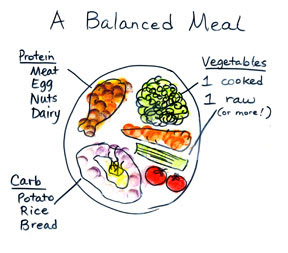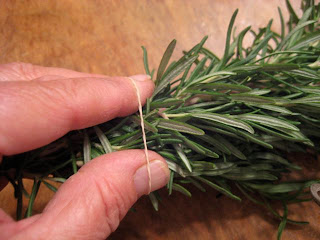 My daughter Louisa (13) and I
My daughter Louisa (13) and I
We made it, Louisa and I! Yesterday was our 100th day without sugar! Of course, we had to celebrate, so she and I went on a dinner date, and NO, we did not eat any sugar . . . hee hee.
How did we ever make it to Day 100? It seems impossible, but Louisa and I stayed sugar-free all summer long—through a graduation party, birthday parties, a camp-out, and 3 family reunions.
What have we learned in the last 100 days? We learned it is definitely not about willpower, it is about making up your mind! The book, Suicide by Sugar, really helped me realize (once again) that I was doing a “self-destruct” and as I treasure life, and value my body, I really don’t want to harm myself, or cause my family to suffer the repercussions if my health is impaired. I don’t know if God will remove the desire from us, but we can pray for God to help us with changing our mind, and once your mind is made up, the rest is comparatively easy—it truly is!
That first week can be a little rocky physically for some. My daughter Louisa felt better than normal. I felt dizzy, sort of ill, constantly craving sugar, shaky and headachey for about 3 days, proof to me that I was totally addicted. And I still thought about sugar continually and wanted it a lot for about a week or two. After 21 days though, (the time it takes to break a habit), it really became pretty effortless. I don’t think about sugar or treats anymore. It’s just not for me. I know that. It isn’t good for me, it harms me, and I won’t be able to eat it again. I look at the treats in the grocery store the same way I look at cigarettes or liquor. Not for me. That is that.
Before I started this crazy idea, I would talk to the weird people who had gone off sugar. I would think they were nuts and/or lying. How could they just be “over it”? Over something that had its hold on me daily? Last night at the restaurant, the waiter asked what we were celebrating, and when I told him “100 sugar-free days”, he just laughed if off: “Yeah, right. Who can get through the day without it?!”
I don’t care about dessert much anymore, now that I don’t eat sugar. I’d like a cherry, a piece of watermelon, or a ripe juicy peach or something like that, but the whole man-made sweets thing no longer has very much appeal. Honestly, I don’t know how it ever happened, and I sure didn’t expect it to!
Do I still want sugar? Sure! I want all of it: the whole carton of ice cream, the whole jumbo bag of peanut M&Ms, the whole package of Oreos. A little sugar is not enough for me. One cookie does not work for me. I wish I could understand people who have a candy bowl in their living room. I’d have that finished off my 9:00 AM every day! I’d take a handful on the way to the laundry room and detour over to it for a handful on the way back, I’d stash them in my pockets . . . it would keep me coming back and back and back. Can you relate?
I don’t tell anyone except my close associates that I am sugar free. I am not trying to make anyone feel guilty! Or spoil the party. Or make a political statement. Or seem unappreciative for a lovingly made dessert. Or give them (more) reasons to think I am odd. Louisa and I came up with some “rules” for dealing with social activities where sugar is served (which means, all social situations!):
How-to Instructions for Being Cool, Sugar-Free and Not Making Others Feel Guilty
1. Don’t mention you are sugar-free.
2. Smile and say “thank you” when someone serves you dessert. Then just leave it on the table.
3. If someone comments, reply: “Oh, I’ve had plenty to eat, thank you.”
4. Give it away. Most people (especially kids) will think you are being incredibly nice and generous!
5. If you are being served something when not seated at a table, just circle back and return the plate to the serving table nonchalantly.
6. Under extreme duress, cut a bite sized piece with your fork and move it around on the plate, and then leave it. It will look like you had intentions to eat it.
What has being sugar-free done for me?
Physically-
It has taken a huge load off my body. I feel so different. More stable physcially and more energetic. Lighter. Less draggy. I used to feel very fatigued, and easily dizzy or headachey. I looked at bed longingly. There were days when I felt “toxic”. I don’t feel that way anymore. I have lost about 10 lbs. That isn’t much considering how long I have been off sugar. I have other body chemistry issues that keep my weight on. But others I know have lost dramatic amounts of weight. Depends on if you have a soda pop habit (which I did not) and how much junk food you are used to eating. I started out eating whole grains, veggies, etc. so my sugar habit was an occasional (to regular) indiscretion from an otherwise healthy diet.
Spiritually-
I removed an addictive substance from my life, and it has empowered me! Made me feel strong, able to control and direct my life. It gave me some spiritual freedom. Choosing to take in addictive substances seems to dull our sensitivity a bit, limits our freedom, and controls our soul to a degree.
Mentally-
Being sugar-free helps me feel in harmony. Self-betrayal is what happens when you know one thing and do another. And self-betrayal does not feel good to me. It has an element of shame with it, a feeling of living beneath my full potential. Since I teach my kids to eat healthily, I was acting pretty incongruently to feed them nourishing meals, and then break out the treats afterwards (or once they went to bed).
Emotionally-
I am so much more even in my moods. I generally feel happier, less uptight. Sugar can cause mood swings, irritability, and depression. I wonder why I always believed that sugar was a fix for those things, and that it would make me happy?
Some of my friends are undertaking this project on their own, and tell me what day they are on. And some of my blog readers. That is so gratifying to know we are in this together, and that we can take action to improve our health dramatically! If you have any question if sugar is affecting you negatively, try a 24 hour challenge. Can you stay off that long without craving it?
I asked Louisa where we were going with this, on day 101, since she has been the director from the start. She said we’ll finish out the year and then go from there. Sounds doable to me!
Now, my mode of operation is “Diligence”. Knowing that it is an addictive substance for me makes me feel determined not to get hooked again! Life is still great without sugar. Even better, really, as I am not a slave anymore. There are sweet things I can eat when I feel a need. Only I seldom feel a need. Dessert, sweetened with something else than my hook (sugar), just looks like more food to me. And after I’ve eaten a meal, I really don’t want anymore food. No thank you.
 Louisa and I decorated our paper table covering at the restaurant
Louisa and I decorated our paper table covering at the restaurant
P.S. I found another yummy sugar-free product that helps me along the way. This is a product of Brazil and it is rich, delicious, real chocolate cocoa powder mixed with stevia that stirs easily into milk. It’s like Nestle’s Quick for the sugar-free. Actually better, because it is not chocolate-flavored, but real chocolate! Just stir a teaspoonful into a big glass of milk and you’ll have real chocolate milk supreme! For Louisa, it fills the need for sweets. I love it too! I am still debating if chocolate (without the sugar or fat) is good for you or not. In the meantime, it is ultra delicious and helping us stay off sugar!
See it here: Stevia-sweetened Chocolate “NesQuick”
























